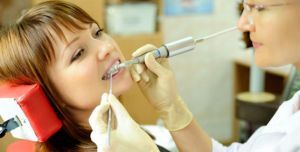 Toothache is capable of exhausting a person, turning him into a pitiful semblance of himself.
Toothache is capable of exhausting a person, turning him into a pitiful semblance of himself.
A huge number of diseases can cause pain syndrome: caries, pulpitis, periodontitis, gingivitis, but in most cases the cause of the pain is a plaque formed on the teeth, in which the pathogenic bacteria constantly multiply and which can easily cause a painful inflammation.
Contents
- No professionals anywhere
- Method Air Flow
- Ultrasonic method
- Laser correction
- Stages of professional teeth cleaning
- Opinion of patients of dental clinics
- Price of issue
No professionals anywhere
Of course, plaque and tartar can be tried to clean and at home, with the help oftoothbrush, dental floss and careful oral care.
But even if a person gives enough time to care for his teeth, he can not defeat the raid on his own. It is enough to look at how the plaque develops:
- in the mouth of a person bacteria, food and saliva residues constantly interact, resulting in a non-mineralized, soft coating, and it is impossible to clean it from the usual toothbrush from everywhere;
- with time a soft coating is caking , is mineralized and becomes a dental stone, hard and unpleasant to the touch, which can not be removed at home;
- tartar develops , captures the entire large surface of the tooth, eroding the enamel, and can cause caries and inflammation, which will have to be treated long and painfully.
Professional hygienic cleaning of teeth by dentists allows to remove plaque completely, leaving only a healthy enamel, in addition, it includes procedures that strengthen enamel and prevent the formation of tartar.
The main methods of removal of dental deposits, which are used by modern dentists.
Method Air Flow
Dental cleaning of teeth using this technique is based on the use of the following components: 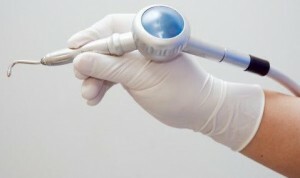
- conventional baking soda;
- jet of air supplied under pressure;
- water jet.
Combining these three factors form a single stream, each component of which has a specific action:
- air ensures the delivery of soda to the problem site;
- soda , bumping against plaque under pressure, contributes to its detachment from the enamel;
- water washes away the fallen pieces and reduces the temperature, which during the procedure is always increased due to friction of soda against the plaque.
The procedure allows you to remove dental deposits of any degree of neglect and provides opportunities for an individual approach to each patient. Adjusting the strength of the jet, the doctor is guided by:
- the thickness of the tooth enamel , which soda, fed too much, can damage;
- tooth sensitivity , if not to take into account which, the patient can be very hurt;
- thickness of plaque or stone - the thicker, the stronger the pressure will be required.
Dental cleaning of teeth with Air Flow has such advantages:
- Painlessness .With proper adjustment, the impact of the jet is almost imperceptible.
- Security .To cause injury to water and soda is almost impossible.
- Efficiency of .The procedure allows you to get rid of the raid of any degree of neglect.
Contraindications to the application of this method:
- chronic respiratory diseases - for example, bronchial asthma;
- allergy to the components of the cleaning mixture;
- increased sensitivity to mechanical influences on teeth;
- too thin enamel and its increased abrasion;
- gum disease - such as gingivitis, stomatitis, periodontal disease.
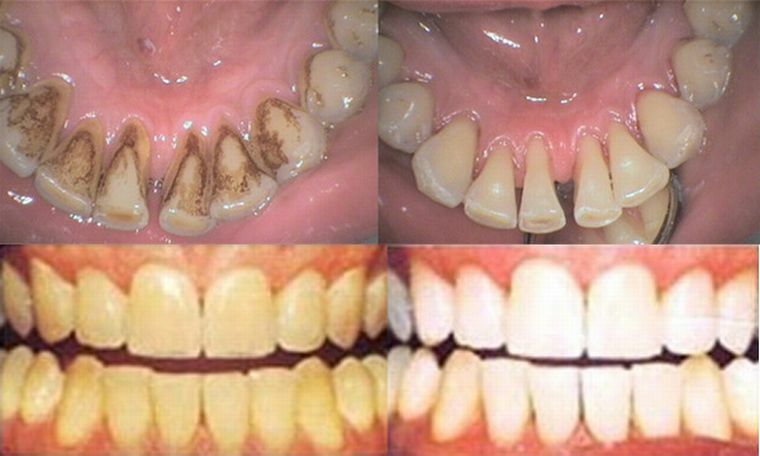
On the photo of the dental line before and after hygienic cleaning using the Air Flow
method. Ultrasonic method
. Ultrasonic cleaning of teeth implies a complex treatment with ultrasound, which has the following effect on the plaque:
- from the inside destroys all deposits without touching the enamel;
- water or special solution rinses off the remains of the destroyed plaque and creates a feeling of freshness( it is often added fragrant fragrances - menthol, mint, lemon).
The advantages of this method are:
- Security .Ultrasound is harmless and will not damage the enamel.
- Painlessness .The effect of ultrasound is not felt.
- Flexibility of the .The nozzle of the device is designed so that it can be brought to the tooth at any angle and clean out even the most inaccessible areas.
- Fast .Only one session is enough to get rid of plaque.
Contraindications to the procedure are:
- sensitive enamel;
- implants in the patient's body;
- cardiac arrhythmia;
- bronchial asthma and chronic bronchitis;
- ARVI;
- hepatitis, HIV, tuberculosis;
- child's age.
Laser correction
Laser tooth cleaning is the most modern method of removing tartar and plaque. The principle of the technique is based on the fact that the laser beam easily evaporates water, and in the dental deposit there are several times more water than in the enamel.
After losing all water, the plaque begins to peel off layer by layer, after which the patient is given the opportunity to rinse his mouth and spit.
The advantages of this procedure are:
- High efficiency .The laser quickly removes any plaque, regardless of the degree of its neglect.
- Painlessness .The laser is not felt by tooth enamel.
- Security .It is impossible to damage enamel with a laser.
- Noiseless .This is a big plus for patients who are frightened by the sound of a drill and any dental procedures.
- Whitening .Of all the procedures, the laser whitens the tooth enamel best.
Have a procedure and contraindications:
- age to eighteen years;
- period of pregnancy or lactation;
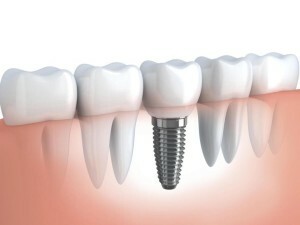
- availability of braces;
- presence of implants;
- increased sensitivity of the enamel;
- heart disease;
- asthma and chronic bronchitis;
- HIV, hepatitis, tuberculosis;
- ARVI and ARI.
Professional cleaning of teeth
Professional hygienic cleaning of teeth is carried out in series:
- Cleaning soft coating .To do this, use a special small electric brush, which is smeared with professional toothpaste. With its help, scrape off the entire plaque, which can still be removed by mechanical impact.
- Cleaning of hard plaque .To do this, use one of the three methods described above( there is another fourth, in which solid deposits are manually cleaned by a doctor, but now this procedure is not in progress because of its painfulness and laboriousness).
- Strips .The tool is a thin metal tape with a rough surface, the thickness of which allows it to be inserted into the gap between the teeth and cleaned of plaque and sides.
- Polishing .After all cleaning, the teeth remain rough, and if you skip polishing, the plaque on them will be formed in even larger volumes than before. For it, small rollers are used, which provide an ideal smoothness for the enamel.
- Treatment with fluorinated varnish .This part of the procedure strengthens the tooth enamel, enriches it with fluoride and prevents the formation of plaque in the future.
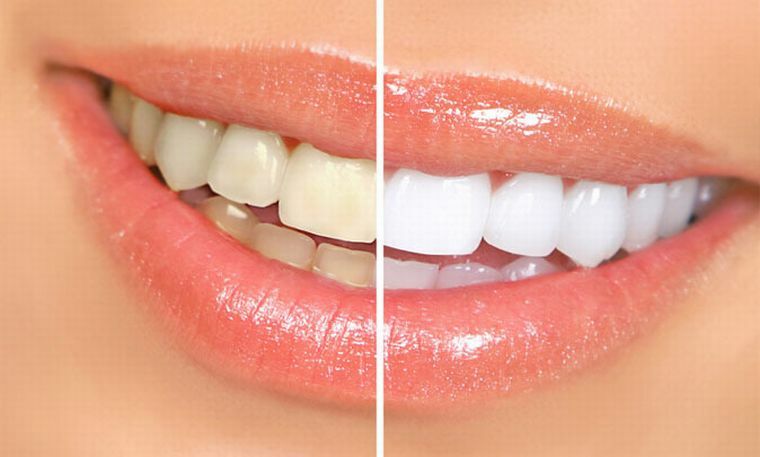
Opinion of patients of dental clinics
Unclear nuances can be clarified by studying the opinions of people who have been professionally cleaned teeth.
Always afraid of dentists almost to the point of hysterics. In childhood, no persuasion, my mother could not get me to see a doctor. Recently I read on the Internet that laser professional cleaning firstly, allows you to protect your teeth from diseases, and secondly, painless, and thirdly, it is silent. Decided to try.
It turned out - really, not scary. No unpleasant sensations, teeth and the truth seem whiter, and I do not remember the way to dentists for a year, because nothing hurts since I started to go for cleaning.
I advise everyone!
Lena K
I'm a smoker. Every morning begins with coffee, and then during the day I drink a few more cups. It is clear, in what condition I have always had teeth with this way of life. Recently my friends advised me to go to the cleaning. Lured by what is inexpensive, and useful, and teeth then, as in advertising. I had nothing to lose, so I signed up.
When I looked in the mirror later, it was stunned. I was always shy to smile because of my teeth. And now they look so, that though never completely shut your mouth. An amazing procedure, besides very simple - all you need to do is sit with your mouth open.
George D
Price
The cost of professional cleaning of teeth depends on the technique used: 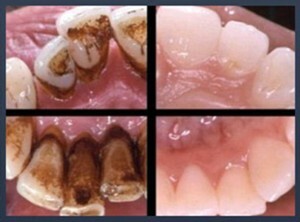
- laser cleaning costs from 3 000;
- cleaning using Air Flow costs from 1,500 to 3,000, depending on the specific clinic;
- ultrasonic cleaning costs from 1,000 to 1,500.
Professional cleaning is needed two to three times a year. It does not take much time, is painless, safe, and at the same time has an inspiring effect on the oral cavity, reducing the risk of dental diseases.
Prevention is always better than treatment, and professional oral care is the best prevention you can think of.
